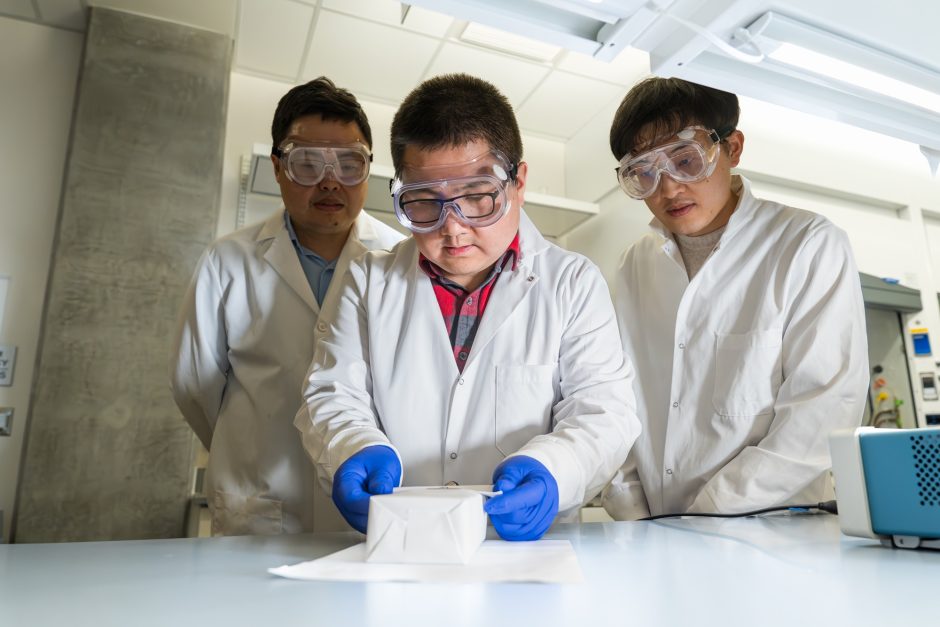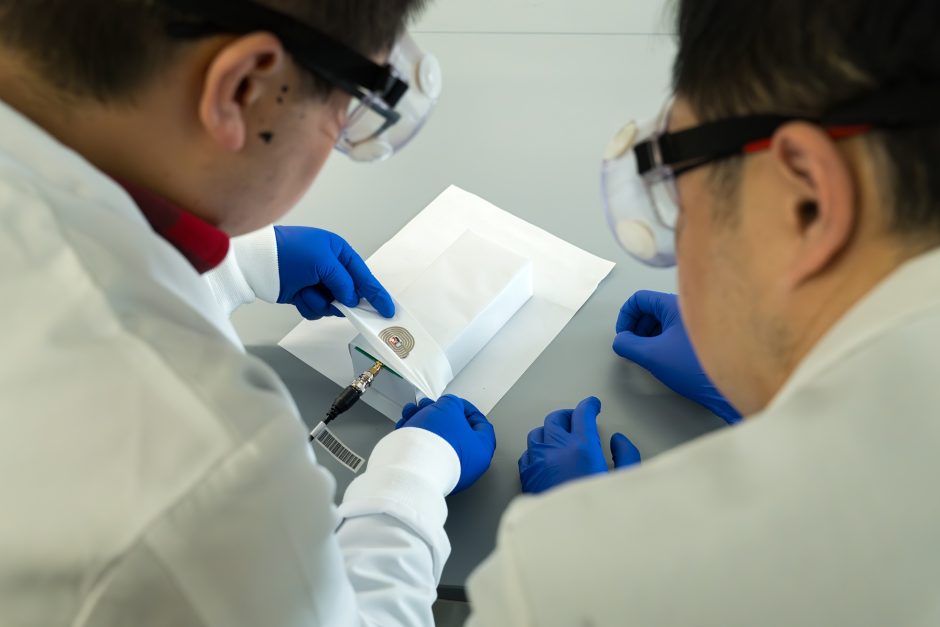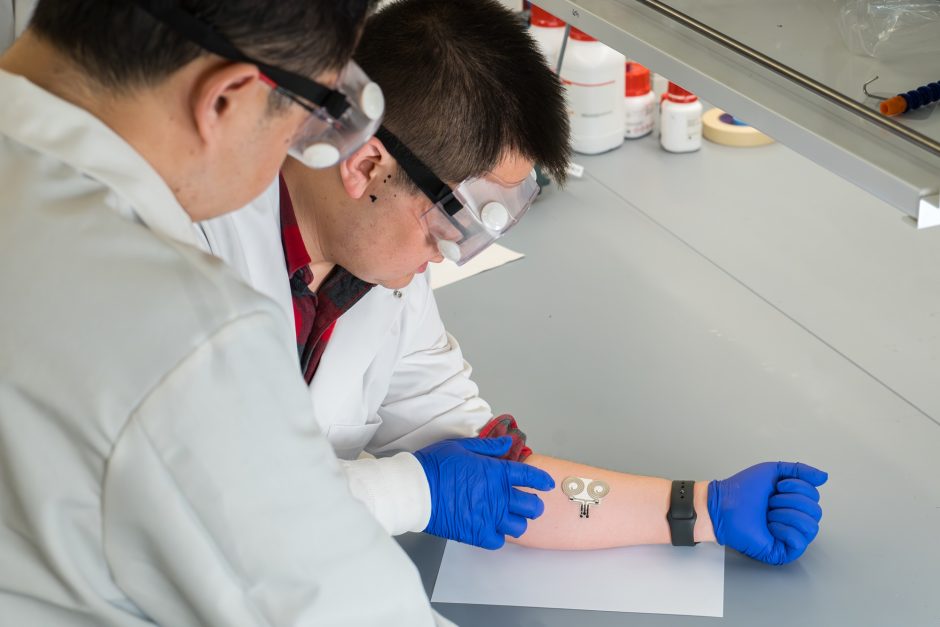By Eric Stann

April 30, 2024
Contact: Eric Stann, 573-882-3346, StannE@missouri.edu
Photos by Ben Stewart
Zheng Yan and a team of researchers at the University of Missouri have made a significant breakthrough in their ongoing development of an on-skin wearable bioelectronic device. Yan’s lab, which specializes in soft bioelectronics, recently added an important component to the team’s existing ultrasoft, breathable and stretchable material.
The key feature: wireless charging — without batteries — through a magnetic connection.
The team’s innovation, recently detailed in Nature Nanotechnology, provides the foundation for gathering precise vital sign measurements like blood pressure, electrical heart activity and skin hydration. The discovery could one day lead to early detection and timely interventions for chronic diseases such as heart disease, cancer and diabetes.
“A watch is a hard surface, so it’s not as effective as our material in providing accurate vital sign tracking,” said Yan, an associate professor in Mizzou’s College of Engineering. “Our porous, soft material acts as an electrical conductor, so it can maintain a stable electrical current during movement. This is a significant step forward toward our overall goal to help improve the long-term biocompatibility and the long-lasting accuracy of wearable bioelectronics.”
The team’s end goal is to provide people with a convenient, comprehensive health picture through long-term self-health monitoring, and the capability to share that information wirelessly with a person’s health care provider. And now, after years of research, Yan has overcome his biggest challenge to date — creating an accurate, wireless connection.
“If we can make affordable, customized electronics and equip our bodies with these devices, we can take proactive actions at the early stages of some diseased conditions and dramatically change and reshape our future,” said Yan, who is also a Roy Blunt NextGen Precision Health building researcher.
The team plans to one day enhance the device’s capabilities to track blood pressure and electrical activity in the heart.

An intelligent implantable device
While Yan’s material has significant on-skin capabilities, he and his team are also exploring the possibilities of integrating it with implanted devices such as a pacemaker.
“If a device made from our soft material can be put directly on the surface of the heart, we can get a more reliable and timelier signal, leading to early detection of this health issue,” Yan said.
Because the implanted material does not require Bluetooth technology and is battery free, it has advantages over existing technology, allowing for safe and effective use in medical applications.

Building blocks
The work builds on the team’s existing proof of concept, as demonstrated by their previous work, including a heart monitor currently under development. Yan’s project is one example of the many medical innovations being created and perfected daily at MU, where researchers and clinicians across multiple disciplines are finding new ways to save and extend lives and push the boundaries of medicine.
The study, “Phase-separated porous nanocomposite with ultralow percolation threshold for wireless bioelectronics,” was published in Nature Nanotechnology.
Editor’s note
For more on the story, please see:
- Wear and forget: an ultrasoft material for on-skin health devices
- University of Missouri researchers design new heart health wearable
- Personal health trackers may include smart face mask, other wearables
- Detecting COVID-19 with a sticker on your skin
- The new tattoo: Drawing electronics on skin
- Wearable AC



